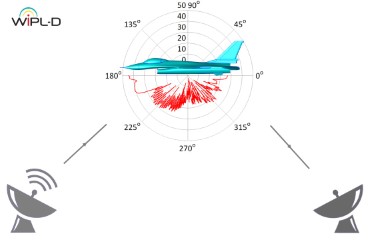NASA Almond RCS in
Time-Domain
This application note describes time-domain Radar Cross Section (RCS) simulation using WIPL-D Software suite, specifically WIPL-D Pro and WIPL-D Time Domain Solver. A metallic NASA almond is illuminated by a plane wave with Gaussian-modulated sine. The object is about 60 wavelengths long, 4 wavelengths high, and 0.2 wavelengths thin, with polarization parallel to the longer semi-axis of its cross-section. Two symmetry planes reduce unknowns, and the object is modeled as a Body of Rotation (BoR). Simulations run on a regular desktop or laptop, showing that WIPL-D Time Domain Solver combined with the efficient MoM solver WIPL-D Pro is suitable for time-domain analysis. Simulation time is measured in minutes for over 100 frequency points.








